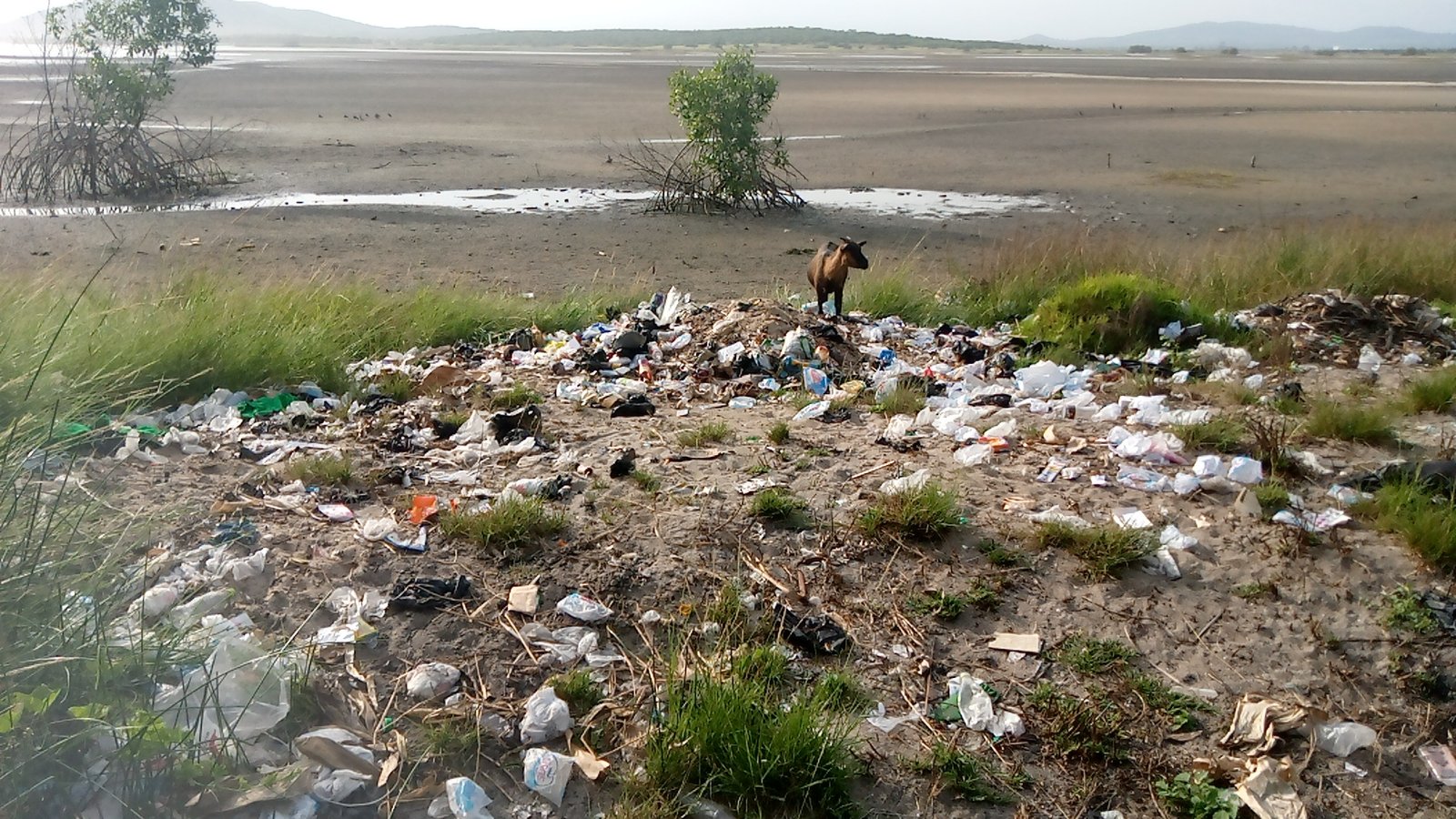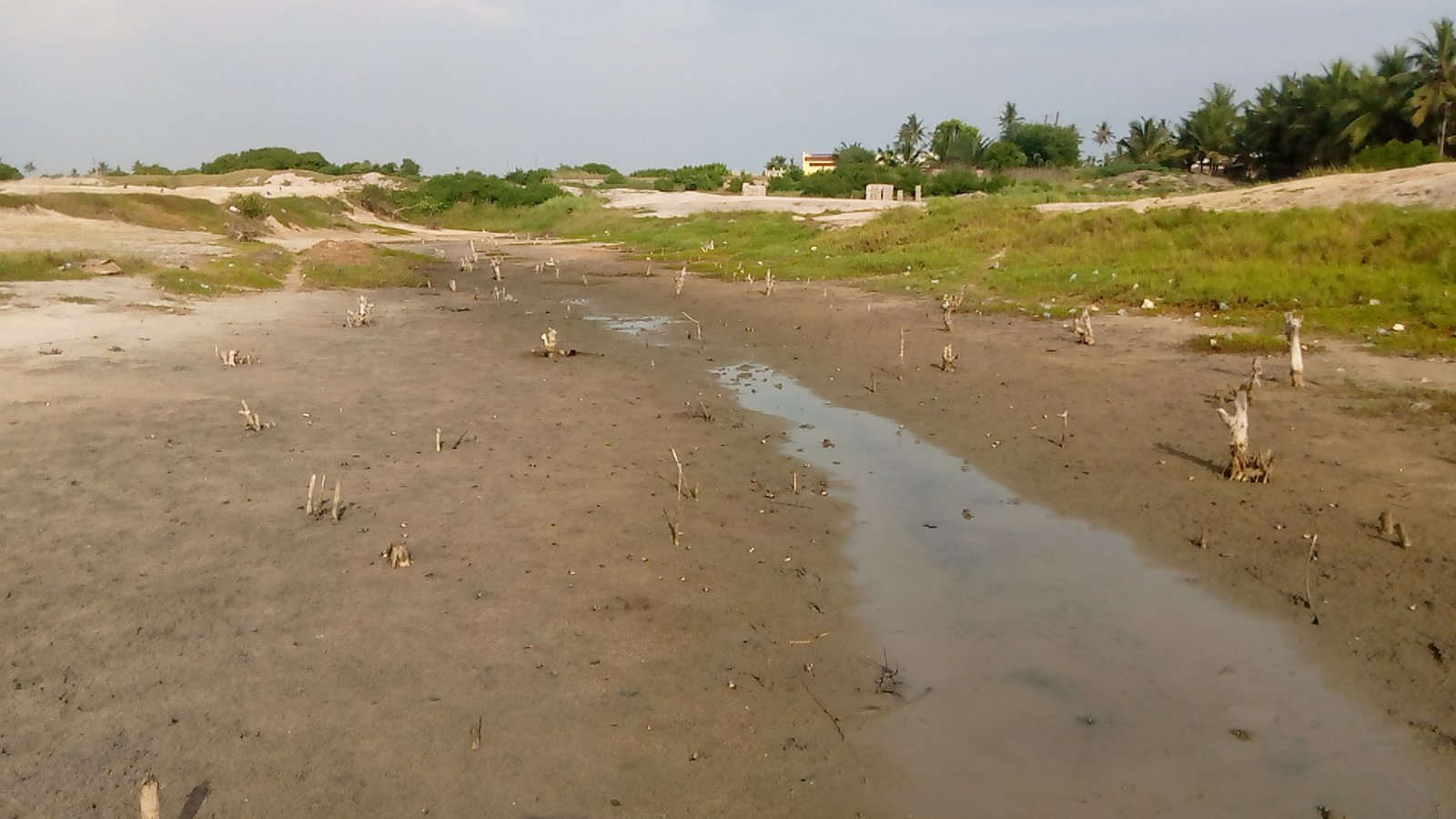

MUNI-POMADSE RAMSAR SITE REPORT
STATE OF SANITATION

Sanitation at the MPRS is deplorable as landfill sites have been created in patches scattered across the area’s land surface. Plastic waste was observed as the predominant waste in the area including; drinking bottles, polytene, and packaging rubbers. Other waste seen at the area included cans, cooking utensils, open defecation, and spoilt clothing. Pieces of plastic waste were seen floating on the surface of the lagoon. The prevalence of plastic waste in the area is attributed to the channeling of gutters and sewages to the rivers that join the lagoon. It can also be ascribed to entertainment that takes place in the southeastern part of the area where Akosua Village is located
STATE OF VEGETATION
Flora life and its abundance in the MPRS was observed as shrinking. The types of plant species observed were mangroves, thickets, grasses, and coconuts. These species were seen within the range of eye observation with a standpoint from the south-eastern part of the MPRS. There is continual felling of mangroves at the MPRS which affects the fauna presence in the area hence causing massive deterioration of the site. The lagoon is a close lagoon that affects the growth of mangroves in the area. From our observation, we describe the MPRS as a protected area with patched vegetation having the potential to develop a mangrove forest and housing numerous waterbirds.

STATE OF FUANA

The MPRS is a place that houses waterbirds of different species. The abundance of fauna in the area determined the designation of the site as of International Recognition in 1990. From our observation, the prevalence of fauna at the site has reduced. Speaking to the Wildlife Division Officer at the area, she disclosed that, the over 42 different species of water birds have reduced drastically over the years. With our witness, we saw three (3) different waterbirds at the area in the southern part of the MPRs in July 2020. Carb farming is prevalent at the place due to the presence of crabs at the southern part of the area. We attribute the lack of waterbirds presence and abundance at the MPRS to the diminishing existence of mangroves.
STATE OF URBAN ENCROACHMENT
Urban Encroachment remains the number one factor impeding the sustainability of the MPRS. Indigenes perceive the area as a “no man’s land” and choose to build with the area. We observed settlements already in the catchment of the MPRS with other new buildings yet to be completed. We are informed to point out to all stakeholders to rise to safeguard the MPRS. We can state emphatically that, until stringent measures are undertaken to revamp and restore the rich biodiversity of the MPRS, the site will lose its value due to the increasing anthropogenic activities in the area. We have understudied the rate at which urban encroachment is increasing at the MPRS with satellite imageries and the use of Geographic Information Systems and Remote Sensing

